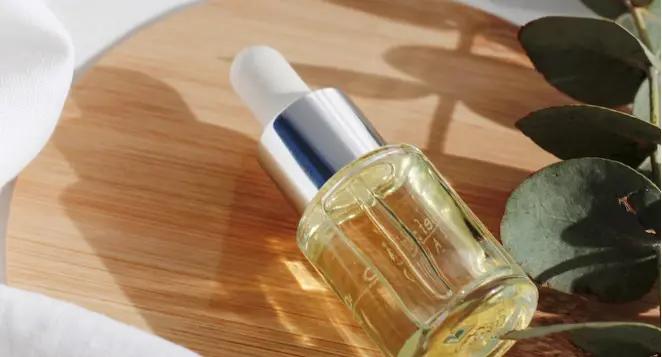HwaHae: 20 Ingredients to Avoid in Korean Cosmetics. Should you be concerned?
If you’ve been browsing through K-beauty cosmetics, you would have probably noticed that many skincare product pages will say something like “20 ingredients to avoid” (20가지 주의성분) or “20 hazardous substances” (20가지 유해성분). In other words, the ingredients that should be on your blacklist. Most brands try to market how their products are a better choice just because they don’t contain any of those substances. But should you really be concerned and does it matter?

Before we tell you a brief story about how it all started, these are the 20 ingredients:
- Butylated hydroxytoluene (BHT; 부틸하이드록시톨루엔) or Dibutyl hydroxytoluene (DHT; 디부틸히드록시틀루엔)
- Mineral oil (미네랄오일)
- Butyl Hydroxy Anisole (BHA; 부틸하이드록시아니솔)
- Sodium Lauryl Sulfate (SLS; 소디움 라우릴설페이트 or 소디움 황산염) and Sodium Laureth Sulfate (SLES; 소디움 라우레스 황산염 or 소디움 라우레스 설페이트)
- Sorbic acid (소르빈산)
- Avobenzone (아보벤존) or Butyl Methoxydibenzoylmethane or Parsol 1789
- Oxybenzone (옥시벤존)
- Imidazolidinyl Urea (이미다졸리디닐 우레아), Diazolidinyl Urea (디아졸리디닐 유레아), and DMDM Hydantoin (디엠디엠 히단토인)
- Isopropyl Mehyphnol (이소프로필 메틸페놀)
- Isopropyl Aclohol (이소프로필 알코올)
- Artificial/Synthetic Fragance (인공 향료) = Parfum
- Thymol (티몰)
- Triethanolamine (TEA; 트라이에탄올아민)
- Triisopropanolamine (트라이아이소프로판올아민)
- Triclosan (트리클로산)
- Paraben (파라벤)
- Phenoxyethanol (페녹시 에탄올)
- Polyethylene glycol (PEG; 폴리에틸렌글라이콜)
- Synthetic/Artificial Colors (합성착색료)
- Hormones (호르몬류)
How it all started
Let’s rewind back to 2009 when a book was published under the title “The Secret behind Korean Cosmetics.” The author decided to raise public awareness on 20 toxic substances that could be found in cosmetic products, just after regulatory changes were made in the Korean cosmetic industry in Oct 2008. The amendment mandated the display of all the product ingredients in order of predominance. That is probably why the title was named “The Secret behind [..]” as consumers were not aware of them before they were revealed to the public. More so, many people didn’t care because the ingredient names were hard to read [I know, so relatable].
Then all the buzz happened after HwaHae* introduced and applied those “20 ingredients to avoid” to their business. Now, the majority of the users will rely on HwaHae’s database because the app clearly shows whether a product contains any of these ingredients or not and whether it is safe for your skin. The reveal definitely triggered a positive trend to where we are to date but for some people, it’s just too stressful.
*Never heard of HwaHae? It is the No.1 Korean Beauty App where you can check the ingredients in your skincare or cosmetic products. More than 260,000 products and 14,000 brands are registered in their database.
Fun fact. According to their statistics, more than 50% of Korean females in their 20s and 30s use their services.
Should you really avoid them?
There has been much debate on the book as it often presented the extremities of the substances. As in, consequences that would normally occur when these toxic substances are orally consumed or inhaled. Some critiques stressed that the author cited journal papers irrelevant to cosmetic use, and that there was inadequate evidence. They added that some information could be misleading for those who lacked scientific knowledge.
For instance, oxybenzone is one of the most common active ingredients in sunscreen. It’s known to cause respiratory tract irritation and to interfere with the endocrine system. Nevertheless, there isn’t much evidence that shows a direct and significant link to humans, moreover, you would have to apply it in very high doses (much higher than when applying sunscreen).
Indeed, oxybenzone is allergenic and likely to cause skin reactions — which is why young children should apply sunscreens without oxybenzone. However, the real and most critical reason you should avoid oxybenzone is that it poses harmful risks to coral reefs and other marine habitats (along with octinoxate, another common ingredient found in sunscreens). Existing literature suggests that these ingredients cause coral bleaching, which in turn, may potentially kill the coral ecosystem. Why is that important? Simply put, coral reefs protect coastal areas and are homes for many marine species.
[Looking for a reef-safe sunscreen?
Check out our top Korean sunscreen recommendations].
Altogether, it’s better to apply a sunscreen that contains the above substances than not applying any sunscreen at all. Direct sun exposure is more detrimental to the skin (e.g., cancer)and sunscreen has been proven to decrease relevant risks.
And for skincare products? Go for what suits your skin. There is a higher chance that you’ll find a product (with more than one of the 20 ingredients) that will complement and boost your skincare routine.
Summary
The “20 Ingredients to Avoid” has brought positive changes to the cosmetic industry. It’s becoming much harder to find a product with the mentioned substances, and consumers are given more options to choose from these days. K-Beauty brands are making their efforts to stay updated and doing research to create products that are beneficial for both the skin and the environment. So, rest assured that you don’t have to freak out if a product contains any ingredient from the above list.
Join us on our joyful shopping journey to explore the K-Beauty world and beyond!
Korean Buddies provides personal shopping services and strives to provide a seamless online experience when buying products from Korea. All you need to do is list everything you want to buy and our experienced team will do the shopping, inquiring, packing, and shipping for you. You can sit back and relax after placing your order (check out our instant quote page — completely free to use and highly accurate).
Not a member?Sign up to get started.
Have any questions? Contact us at support@koreanbuddies.com and one of our friendly team members will get back to you soon.